This time of year is always rewarding; almost overnight things seem to morph from “expanse of wood chips” to “a zillion shades of green.” The days are getting long, temperatures are slowly warming, and perennials and quick-germinating herbs and flowers are responding by popping up everywhere.
With a few notable exceptions (looking at you, bindweed), most of what comes up at this time of year is very welcome. Here are ten reliable, low-care, self-propogating herbs and flowers I can count on to take over my garden every spring.
1. Oregano
My favorite easy, herby ground-cover, oregano has spread via seeds and runners from a modest original planting to cover large swaths of my garden. Although there is no way I could use all the oregano that now grows here, I encourage the plant everywhere I can. It stabilizes soil and softens path edges, looks fresh with hardly any effort from me, and the bees adore its tiny purple flowers later in the season.
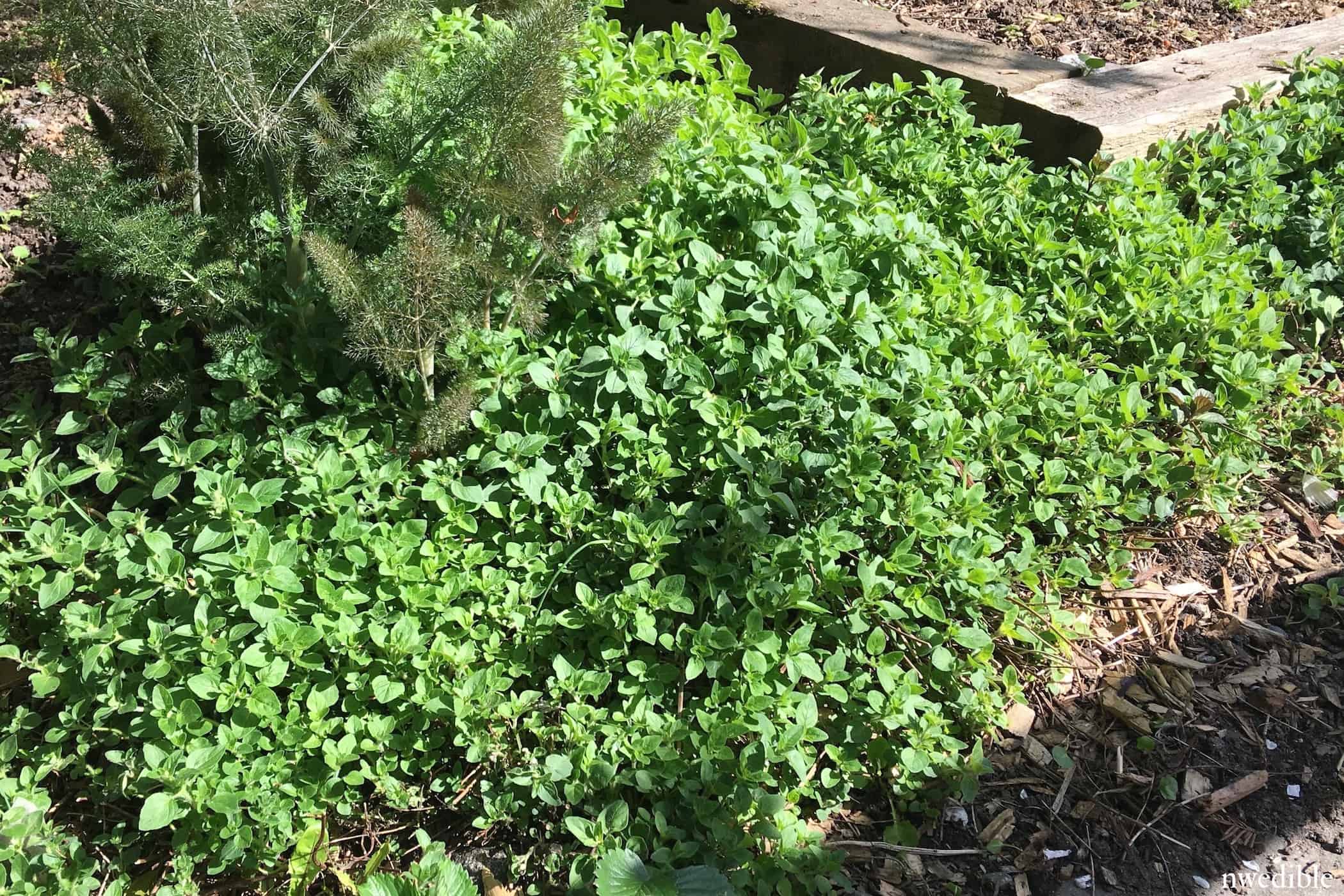
2. Calendula
Also called Pot Marigold, this is a cheery little flower that I planted once about 12 years ago, and have been enjoying ever since. A reliable self-seeder, calendula is highly valued as a multi-use herb. The flower petals are edible and add a lovely color to salads, or can be dried and ground to use as a replacement for saffron. They are also highly prized for skin care; oils or salves made with calendula gently soothe irritated or damaged skin.
Multiple religious traditions have valued calendula. The common name of the flower comes from “Mary’s Gold” because calendula was used in some early Catholic events. Hindu and ancient Greek and Roman religious rituals also made use of this flower.
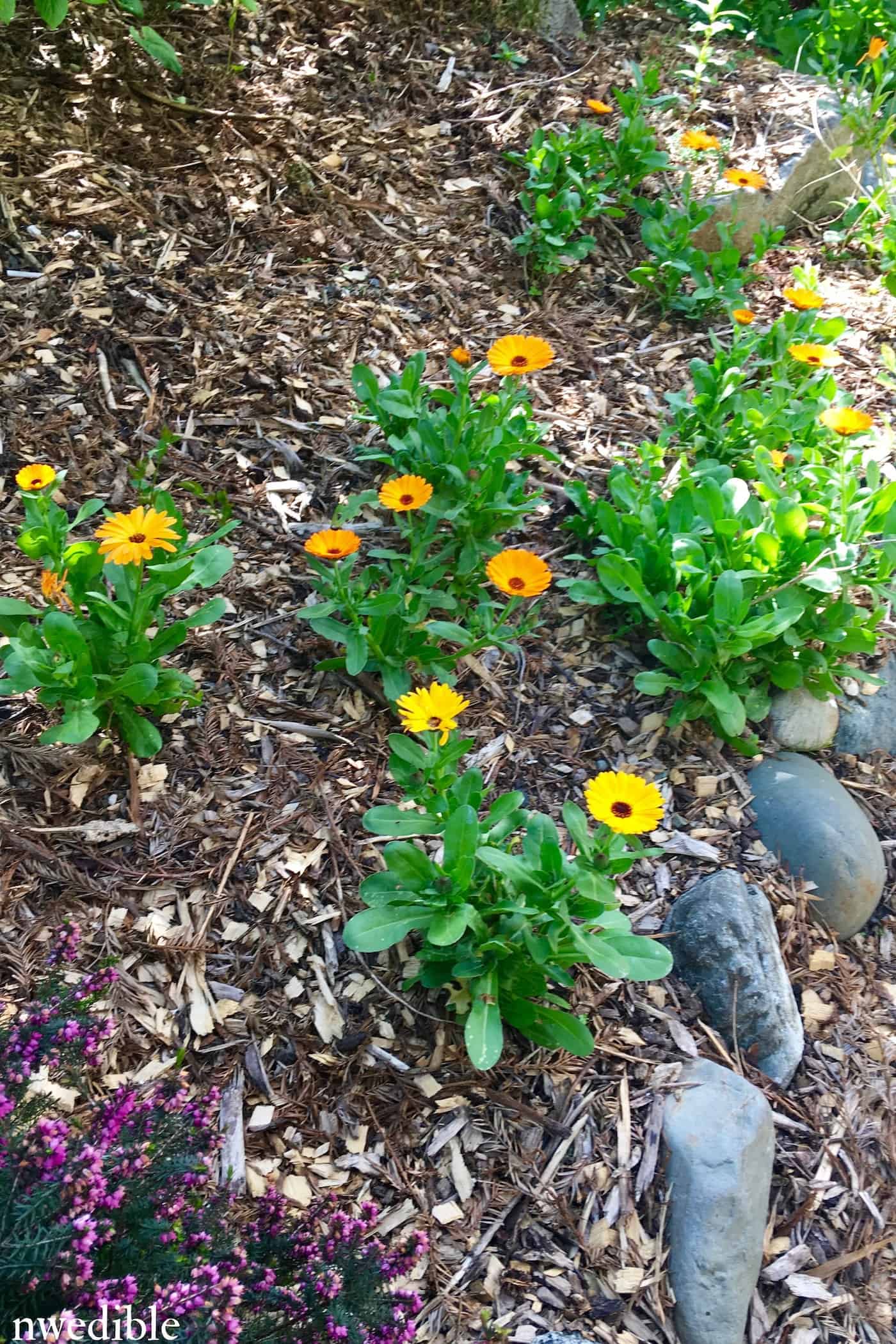
3. Garden Angelica
Angelica is a big, beautiful, polite self-seeder with stunning puffy blooms that drive bees crazy. Used medicinally and culinarily, angelica flavors teas and liquors, and is used in confections and pastries. It is in the Apiaceae family, which also includes garden favorites like carrot, dill, celery and fennel. Sounds great, right? Well, there’s a little catch….
The Apiaceae family also includes some of the most poisonous plants in the world, Poison Hemlock (Conium maculatum) and Water Hemlock (Cicuta). You may know Poison Hemlock as the plant that killed Socrates. If you live in the Pacific Northwest, you should also know Water Hemlock, since it grows extremely well here, and will totally kill you dead. I’m not kidding – some kids rubbed Water Hemlock on their skin and died from that. There are reports of kids using the hollow stems of Hemlock or Water Hemlock as a straw or whistle and dying from that.
Garden Angelica is fairly similar in appearance to Water Hemlock, and somewhat similar in appearance to Poison Hemlock. If you see something like this plant in your garden and you didn’t plant it and can’t positively identify it, don’t just assume it’s Angelica. If you see something kinda like this plant in the wild, really don’t assume it’s Angelica. My rule of thumb with any plant that makes white, umbel-shaped flowers is, if I don’t know exactly what it is, I assume it might kill me. So far, I’m not dead.

4. Lemon Balm
I once read a magazine article by a woman who was oh-so-proud of herself for managing to divide and propagate her lemon balm. Get your green thumb kudos where you can I guess, but from my perspective getting lemon balm to not take over everything in your garden is the real accomplishment.
I have more of this lightly lemon scented mint-relative than I really care for. It’s all over my yard. Every year, some new clump shows up and begins to grow. At current rate of growth, I estimate I have about 15 months until all the clumps converge and begin a coordinated assault on my living room. In 2 years, I estimate the lemon balm will take on a rudimentary consciousness and begin to speak. Shortly after that, I anticipate it will be elected the next President of the United States.
On the plus side, it’s nice in tea and as a temperate climate alternative to lemon grass.
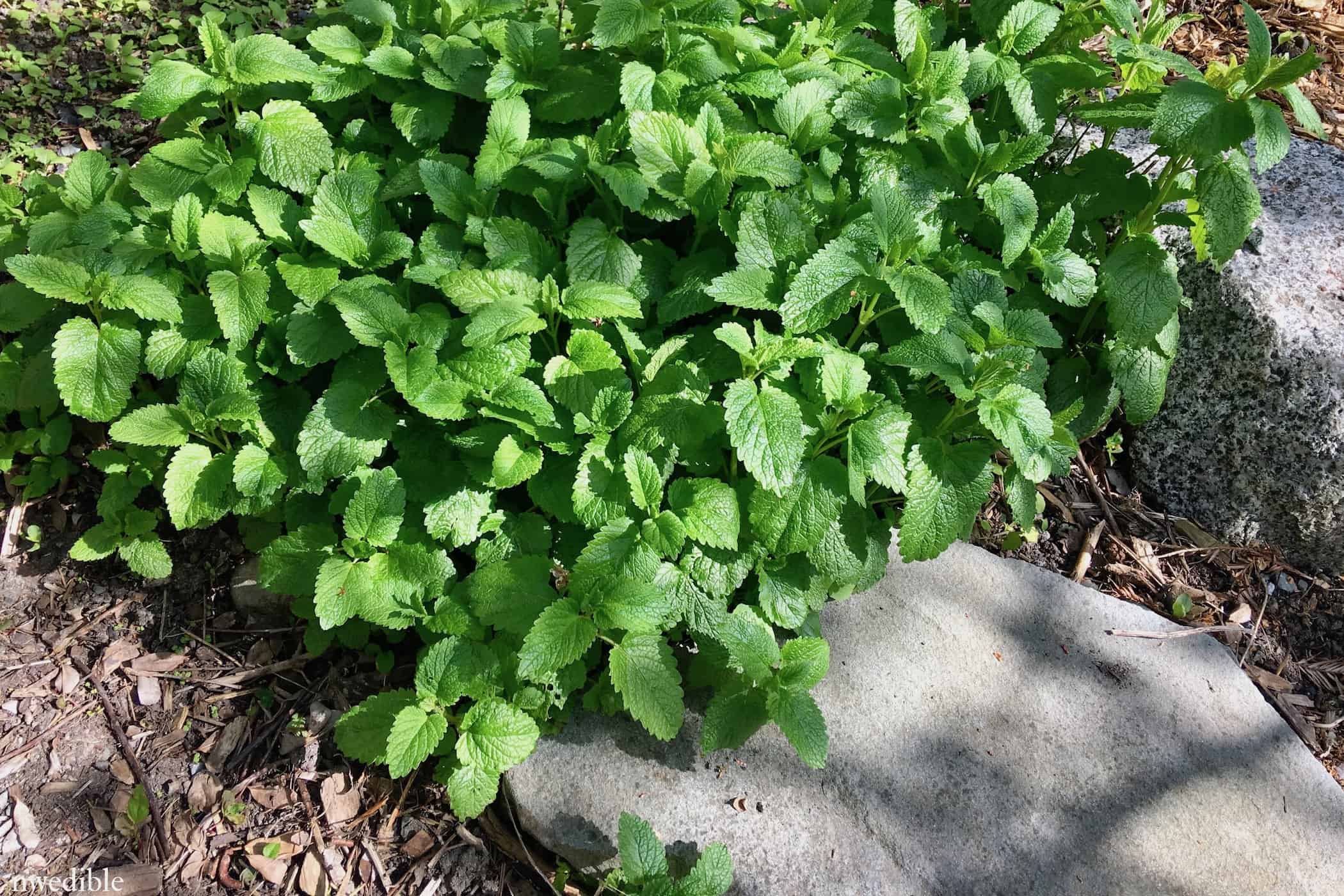
5. Comfrey
Because I started with a sterile variety of Russian Comfrey called Bocking 14, I don’t have to worry about this plant self-seeding everywhere. However, with just a little help from me in the form of transplanted root cuttings, it’s spread far beyond it’s original planting and now my yard sports probably 30 comfrey plants that all start growing eagerly in the spring.
I am naturally suspicious of anything that people claim as a cure-all, and comfrey has such a huge fan club in the permaculture world that when I planted my original root cutting I was doubtful it could possibly live up to the hype.
Guys…it lives up to the hype. Go plant comfrey everywhere. It’s my favorite plant too, now.
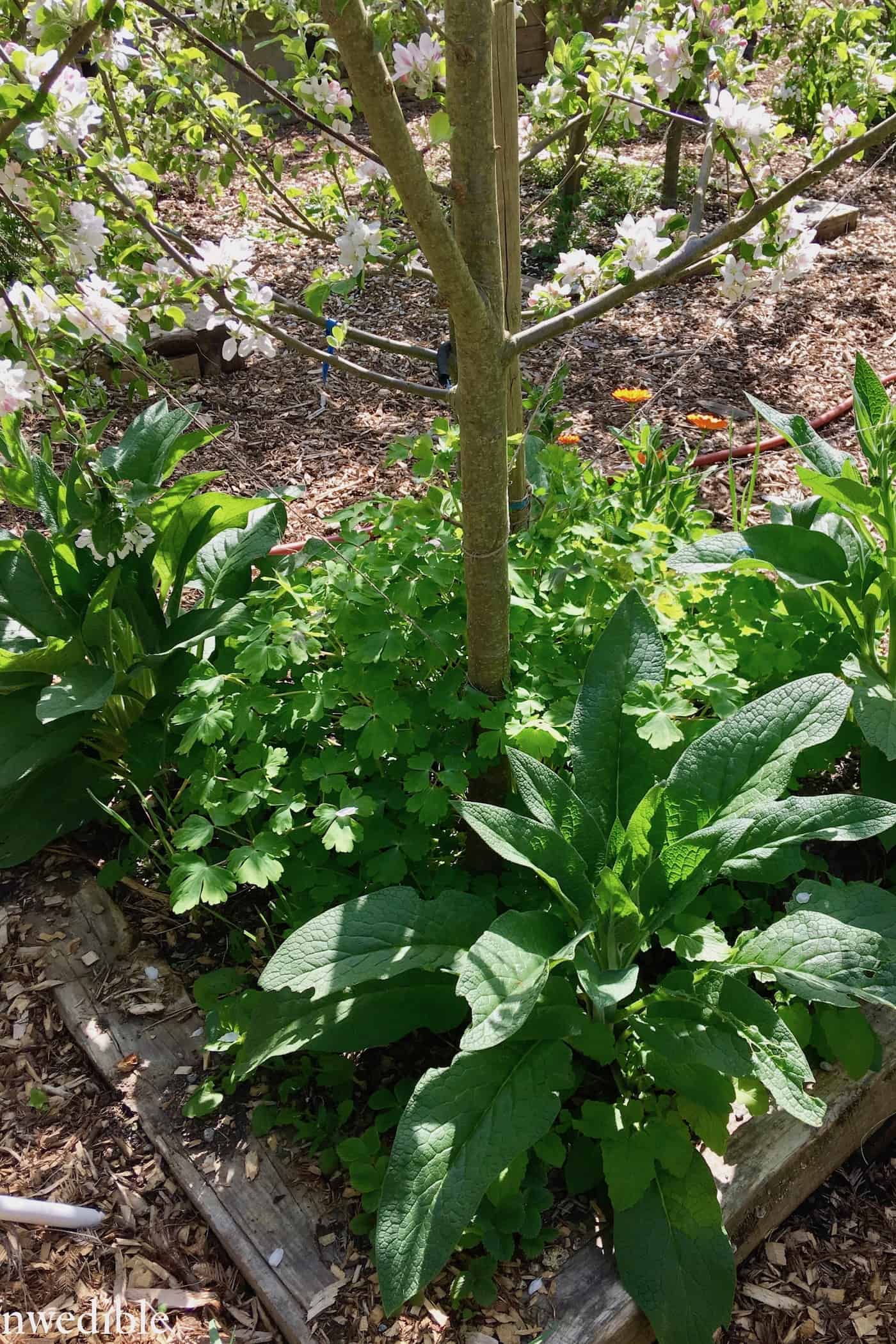
6. Bronze Fennel
Borderline invasive through self-seeding, but I like it and the beneficial insects like it, so it gets to stay. Bronze Fennel has a soft, feathery leaf with a lovely color that seems to play well with whatever it ends up next to (look at the fennel and chive combo below – that’s pretty, right?!) The flavor is sweet anise – fans of black licorice will love it, but even licorice haters may like this herb in teas, beverages, added to salads, or used with seafood. Let it flower and beneficials will love you forever.
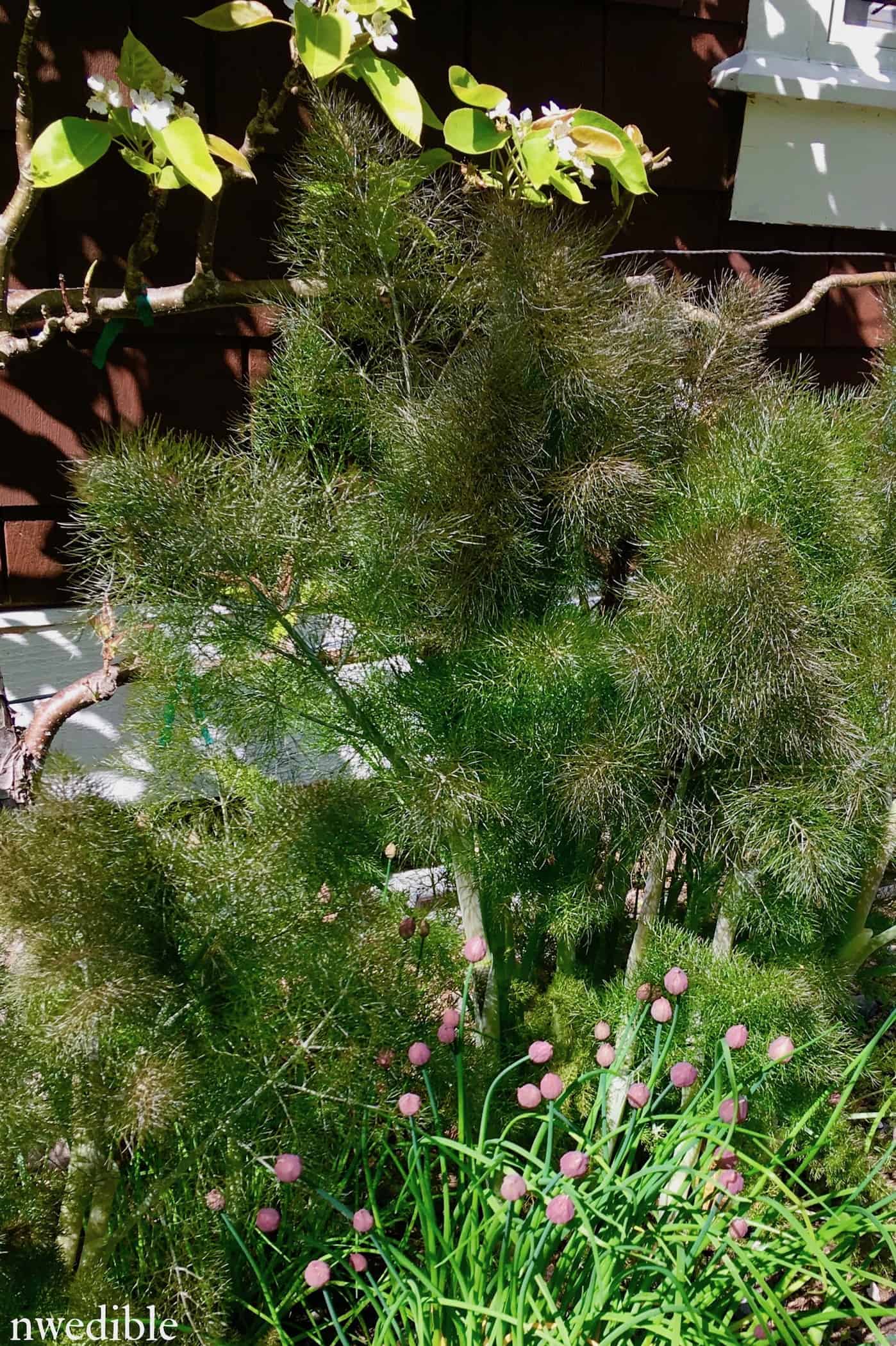
7. Shasta Daisy
Simple white petals surround a yellow center – when you picture a daisy you are almost certainly picturing a Shasta Daisy. These self-seeding perennials can be divided by the gardener to form deliberate drifts of flowers, or let them go to seed as I do and random clumps of daisies will find themselves a home without any work from you. Just be careful if you are near a sensitive ecological area – sometimes they self-seed a little too well.
I know of no real use for Shasta Daisies – you can’t eat them and they don’t have any herbal or medicinal value I’m aware of – but sometimes simple and low-maintenance and pretty is enough justification. The flowers make a fine cut flower, just check for bugs before you bring them inside.
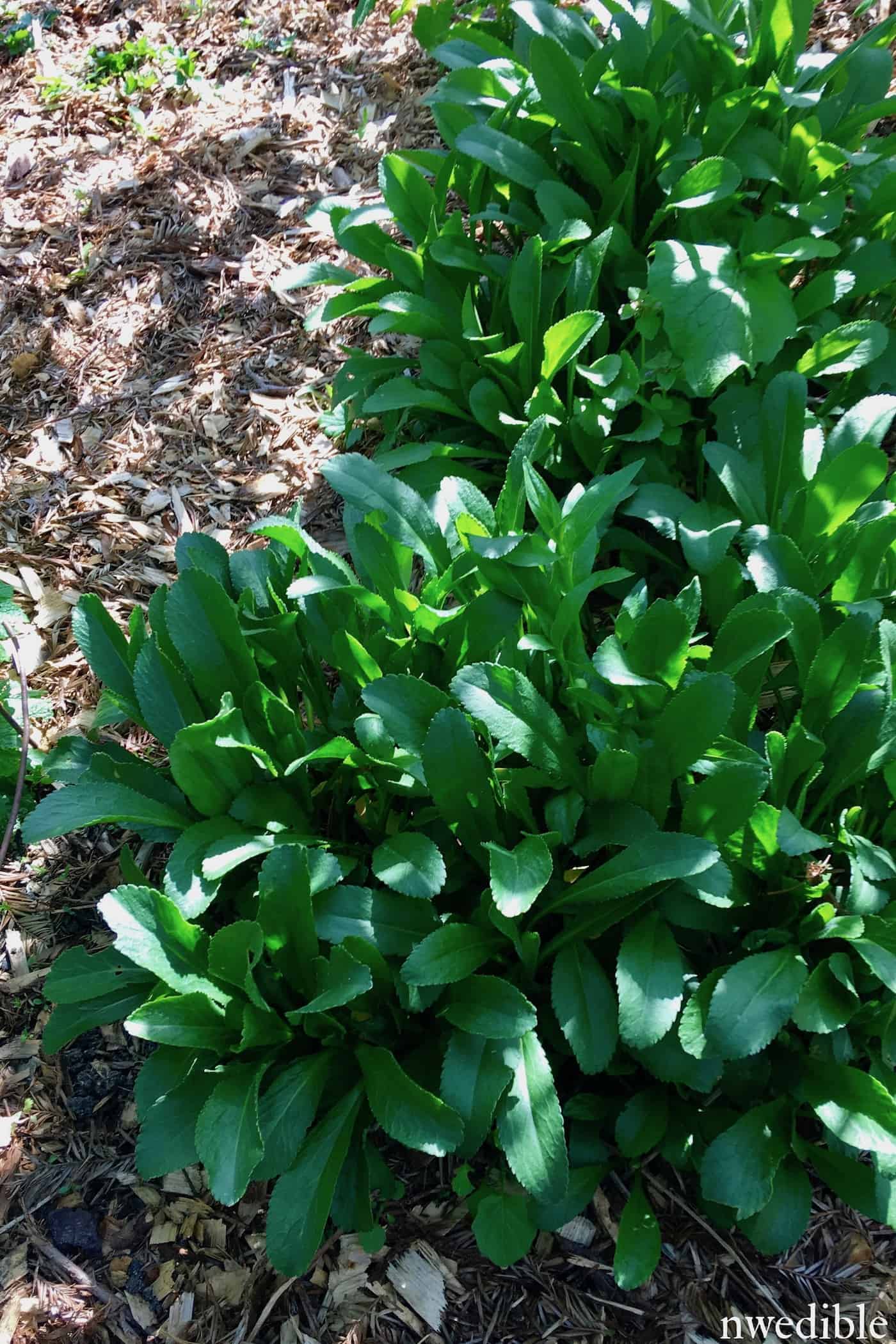
8. Mystery Sedum
Another plant that just showed up. If I had to guess, I’d say this is probably Sedum album, also called White Stonecrop. It’s the “filler” of the succulent world, but I like it very much. I save all my elitism for vegetable seeds and have absolutely none left over for ornamental plants.
This sedum grows well in any little sunny, rocky nook it happens to find. It finds such locations on it’s own quite frequently, but sometimes I help it along by pinching off a clump or two and dropping the cutting somewhere else, with decent sun and sharp drainage. When I say “drop”, I mean that literally…transporting is transplanting, in the case of this sedum.
Clumps of this plant never really disappear in the winter, but every spring when I notice it, I’m quite sure it’s leapt in size. The flowers are small and fairly subtle, but they appear on a little stretched-out sedum pedestal, held up above the rest of the low growing plant.
Apparently there are traditional herbal uses for some varieties of sedums, but I simply enjoy mine as a tough little no-work ground cover.
9. Strawberries
Strawberries grow very happily in dappled sun, but don’t fruit particularly well there in my experience. Originally planted very deliberately, strawberries in my yard have long since escaped any semblance of control, and now runner as they will under fruit trees and shrubs. For this reason I consider many of the strawberries in my yard to be a kind of semi-naturalized ground cover, more than a managed crop for harvest.
As long as I transplant enough runners to places with enough sun often enough, there are always berries for me to harvest, so it works out.
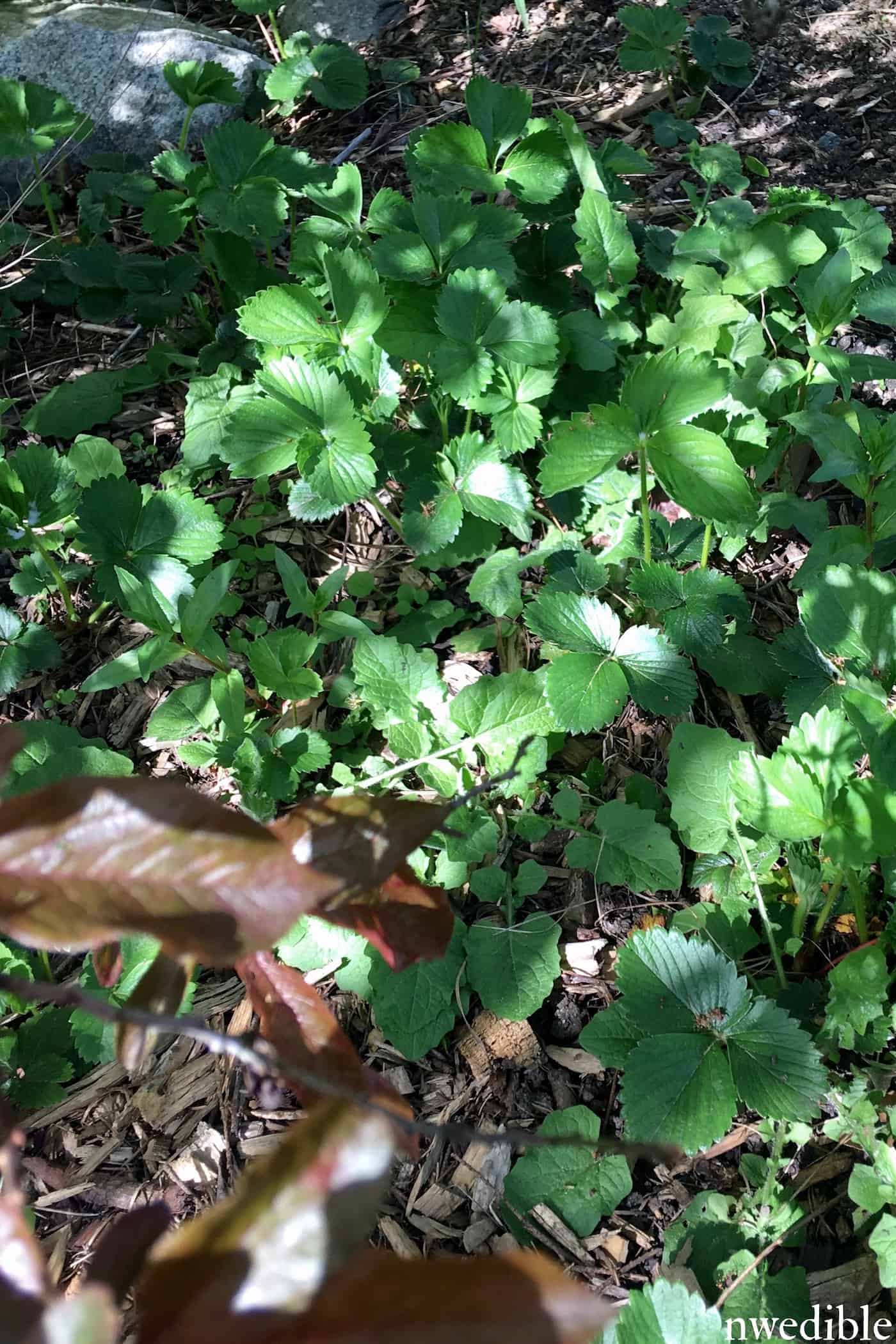
10. Aquilegia (Columbine or Granny’s Bonnet)
A self-seeding hardy perennial, this columbine arrived several years ago, its seed transported by bird or wind or cat, I imagine. I’m so charmed by the shamrock-y leaves and pretty blue, bobbing-head flowers that show up later in the season. (Here’s a photo of what those flowers will look like.) I cross my fingers every year that more columbine will decide to call my garden home.
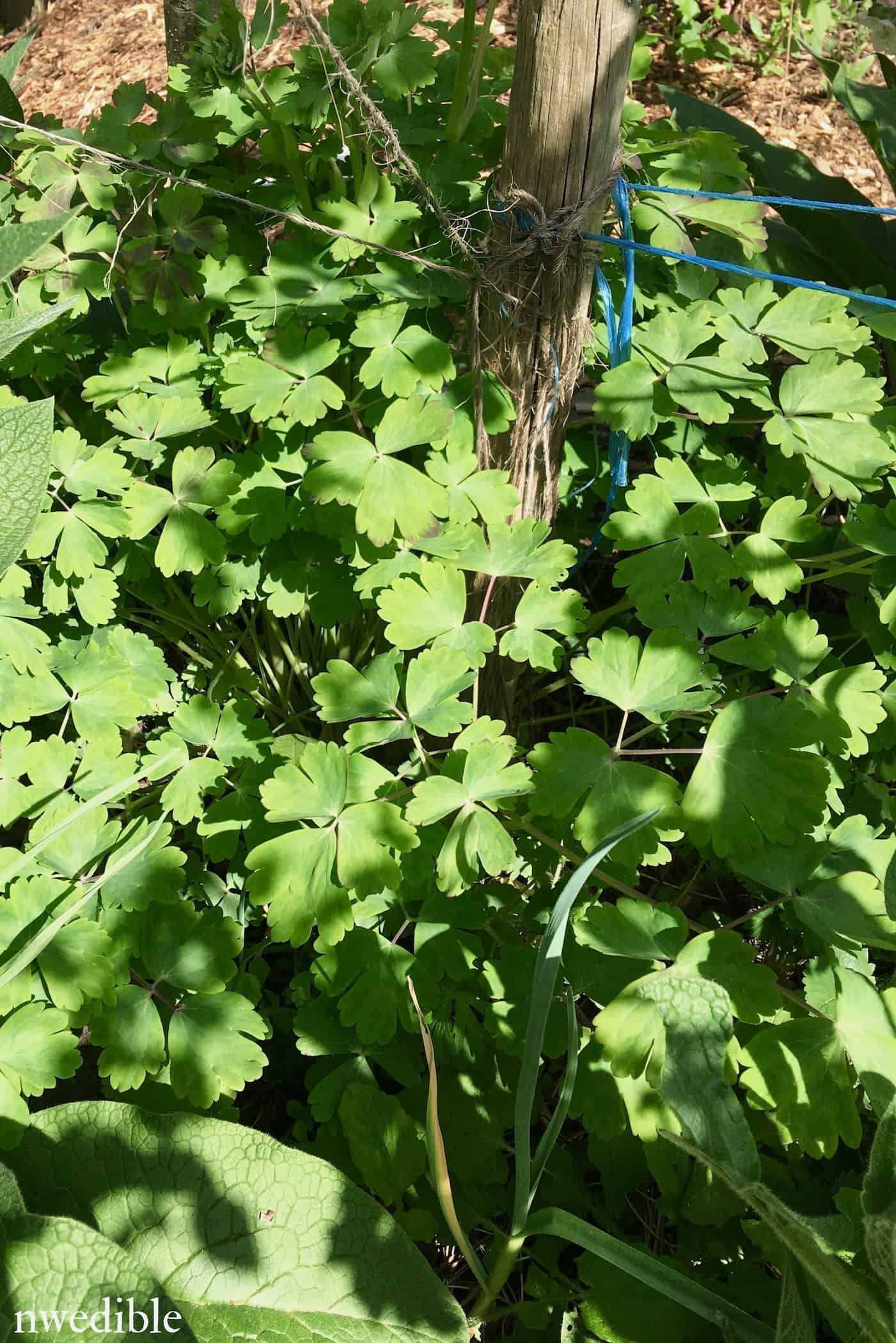
Sometimes They All Show Up Together
I’ll admit to planting the comfrey growing under these young apple trees, but the calendula, columbine, and strawberries all joined the party on on their own. I think the garlic probably naturalized from a deliberate planting made many years ago.
In any event, this charming jumble of happy self-seeders and traveling perennials mostly just showed up here – and I’m so glad they did!
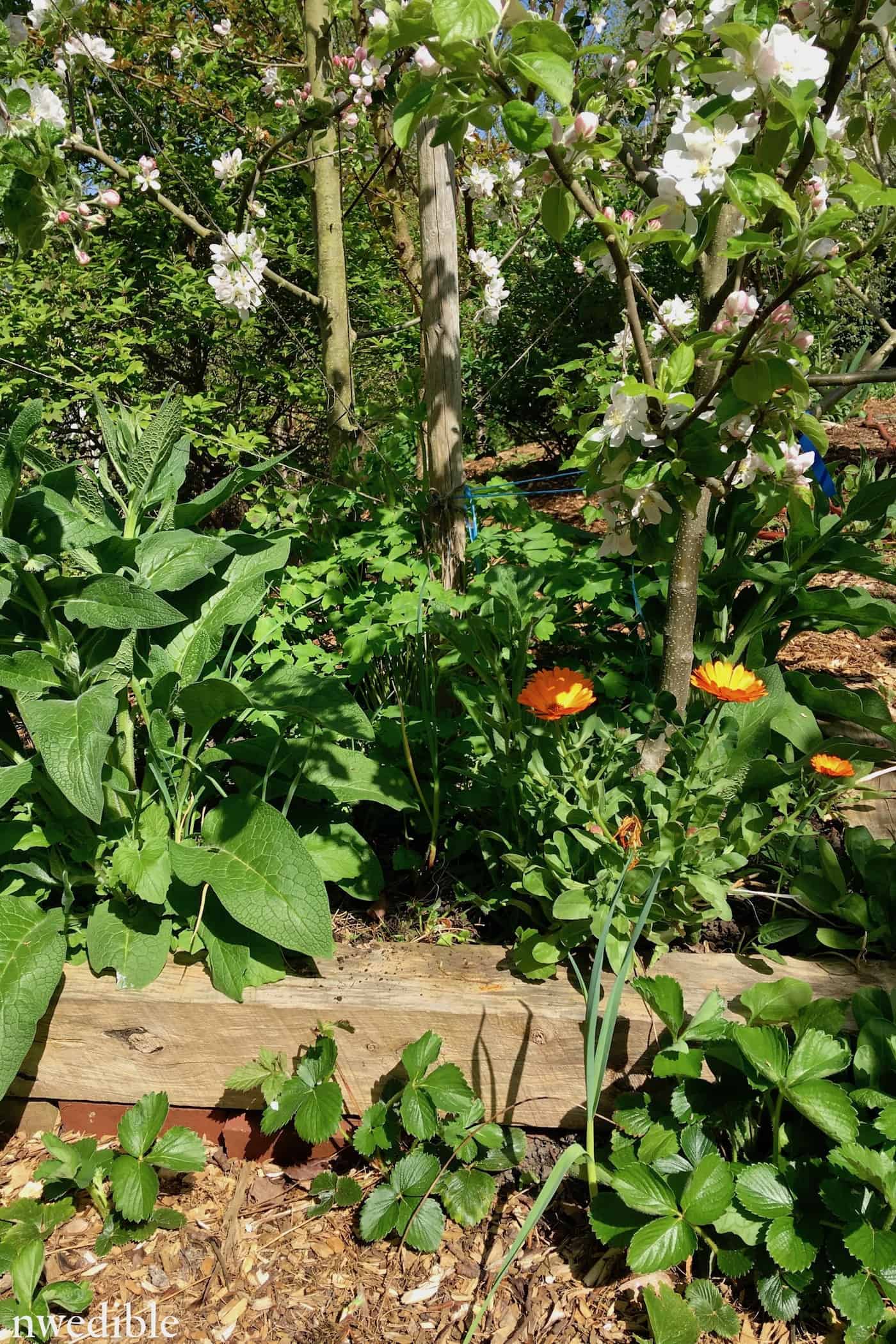
What plants are taking over your garden right now?
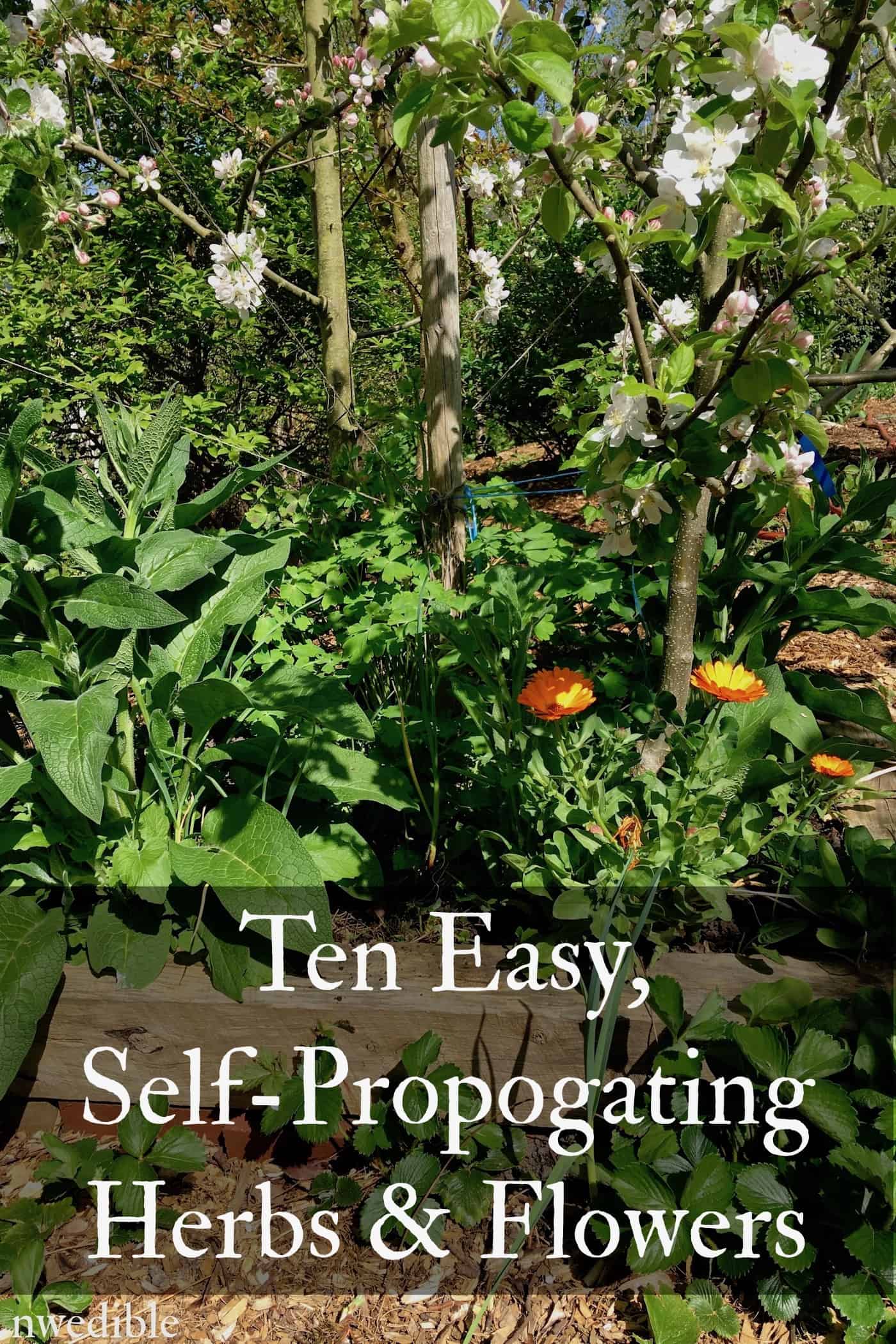


Arrggg, we had to rip out all of our oregano. It was just too invasive in our ornamental beds. Years later and it’s still cropping up. I moved some to a pot at our office so I can still harvest and dry it. For whatever reason our Shasta Daisies flopped. They went strong for years and then came in shrunken and sad, and then were just done. We transplanted a few last year. We’ll see how they do in their new spot. I’ll have to check out some of these others. Thanks for sharing!
Hey Reeves! In the beds it would be a thug, for sure. Around paths and such where it’s competing with fruit trees and similar it plays nice(r).
That’s a posting full of inigths!
How do you deal with hedge bibdweed? It’s so aggressive.
Mostly cursing. I don’t think you can get rid of it, you can just manage it. In particularly bad areas, I’ve forked through the soil 2 or 3 feet deep and methodically, physically removed all the damned white fleshy roots I could find. That was backbreaking and helped…a little. If you see some coming up, rip it out as soon as you can to stop the leaves from sending more energy down to the roots.
Thanks for the reply! I feel better knowing I’m not alone in the bibdweed struggles. I’ve come from despair to acceptance that it will always be here, never goes away, but at least it’ll never have a chance to flower on my watch!
Every spring, I get visited by the Spirits of Cilantro and Dill Past. I will often transplant the dill into better locations, but I just let the cilantro go for easy harvesting.
I love finding cilantro! I wish dill would decide it loves my yard, but so far no luck.
You can’t forget parsley, I always let a few plants go to seed. You will see very few aphids f you do that as the parsley flowers attract the soldier beetles which will snack on aphids. I do prefer the Italian parsley, much better flavour
Great one! Letting parsley go to seed is the easiest way to get more parsley. The fresh seed germinates far better than even same-year purchased seed, too.
Wow, I have and adore all of these! But…comfrey is my favorite. When we moved from Indiana to Washington, the only thing i brought from my garden was a few inches of comfrey root. I have about 17 of them in the yard now, all purposefully planted.
I agree, great plant! So many uses, great for the livestock, a must for natural skincare, and downright pretty to boot.
Forget me nots! Welsh poppy! Columbine! Nasturtium! Blue star creeper! Spanish bells (ugh)! Violets (yea!) love the volunteers of the garden
Oh nasturtium! Another favorite. I don’t have any coming up that I’ve seen this spring. But in years past it’s been a gem for covering paths with lovely peppery flowers. Great ones.
Oh, you poke a little at the lady with the lemon balm, but… when I lived in the the sun-baked and wind-swept midwest plains, getting that stuff to grow was nearly impossible, much less getting it to self-propogate. I don’t know if it was the clay in the dirt where I lived or what, but my plants were almost always spindly and barely made it through the season.
See also: blackberries, which, out here in the northwest seem to be made of titanium and tenacity. Out there, they were $22 a cane and if you bought three, you’d be lucky to end the season with one. (I’m still kind of amazed I can just wander anywhere here and pick my own vine candy from the *weeds*. :D)
Interestingly, I live in near-desert conditions in Colorado, and the lemon balm (and some random fennel) has propagated itself all over the darned place. Including in the gravel surrounding our raised beds. (Hey, I didn’t put the gravel there, I just shoved it aside and put the beds in.) Which are on the south side of the house, in full sun, with reflected heat from the stone walls. They seem to be surviving on a little bit of water that seeps out of the raised vegetable beds (and we’re not over-watering those either, by any means).
Mint (of the regular kind) also spreads itself all over, obviously, but it’s a fairly pleasant chore a few times per year to pull it out by the handful and have the kids make tea… We also have orange poppies (or, as we call them before the flowers open, “testicle plants”) all over the place, but they’re so pretty and well behaved it’s hard to get upset about the.. They’ll have bloomed and died back in a month or so.
Everything you listed along with borage, parsley, poppies, nigella, nasturtium, upright verbena, foxglove and feverfew. Thanks to the wildlife I also have plenty of new oso berry, beaked hazelnut and sour cherry starts everywhere.
What variety of oregano do you have?? Mine hasn’t spread at all and it’s several years old! It’s dark leaf oregano.
Borage, Nigella, and CA Poppy up the wazoo!
Love all of these. I’m lucky to find borage, dill, chervil, aster, and chrysanthemum spreading, but thyme is queen here. I’m working the creeping thyme angle the same way you are oregano, Erica, plus I have several more delicious thymes spreading themselves around.
Amy, I don’t think it’s clay that bugs lemon balm, because I have enough for my own pottery business–but I’m probably more humid and less windy (VA).
I love oregano, lovage (celery herb), lemon balm, mint, sage, thyme, and rosemary. I grow most in large pots on a patio so they don’t become invasive. I let basil go to seed so I don’t need to replant each year. Also grow lots of salvia and nepeta to bring in lots of pollinators. Couldn’t garden without them.
Wow… love this post + comments! I hear my ‘attitude’ creaking as it makes a serious u-turn. Must redefine many of these as ‘home grown biomass/mulch resources’ (tall ones) and ‘ground covers’ (low ones 🙂 I can only add sweet cicely… another anise flavored, white cluster flowered eager beaver. How about Kenilworth ivy? It is a tidy spreader and doesn’t seem too hard to remove when you need a bare spot… ? And for a tinier spreader, there is that funny, tiny blue flowered speedwell, veronica persica …is it too scary to let ‘go’ ?
Daikon radishes are the self-seeding champion on my property. Most annual plants hate me, but not daikons! They self seed and grow everywhere!
I also have little wild/wood strawberries that do a good job of reproducing themselves. My parsley is also doing great at reproducing itself, as is the salad burnet.
Dandelion is another self-producing flower that I love. It’s great in tea, my son loves to eat the flowers, and it’s wonderful for our pollinators. I try not to mow until the dandelion goes to seed so I can get even MORE dandelion! I’d love to have a lawn of dandelions, rather than grass!
I’m actually trying (I may regret this) to get mint to take over, because my husband literally uses 1/3rd cup of *dried* mint in his tea every day. I’d love to not have to buy mint any more!
Frankly I think that’s abeltulsoy good stuff.
I have the standard strawberries attempting to take over the world in the herb and rhubarb plots. This year I have lupine popping up everywhere. I didn’t dead head my biggest plant until late last year and where I let it rest for a couple days before picking up the yard waste is a carpet of itty-bitty lupine sprouts. I took a bunch of sedum trimmings from my neighbor last year and they have taken remarkably well. Not sure what variety, but probably “angelina” because it’s bright green and needle-like. I’m happy it’s doing so well because I’ve had a hard time getting anything to cover a couple of shady areas near my house.
I have most of these and they are largely welcome. The lemon balm. So. Much. Lemon balm. I have started to wonder if I am surrounded by an anti-depressant for a reason! (answer: yes) I also added skullcap this year, which I am hoping will behave like all the other mints and really fill out some spaces.
I put in native Douglas Asters last year and they reseeded marvelously. Such pretty fall color for the pollinators and they required absolutely zero care and just kind of flop prettily through whatever else you’re growing. I’m also trying to get rudbeckia goldsturm to grow and self-seed.
I keep trying with parsley. Maybe this will be my year?
I have to laugh about the hemlock. I am now pretty damn sure one showed up last year and I gave it the side-eye and took it out with gloves, but I didn’t know what it was. It just looked – not good.
The only one I don’t have other than the angelica is the columbine and that looks exactly like my speed of plant. And there are still many spaces to fill in around here….
So for today’s dose of humor, the UPS truck just arrived with a flat of golden columbine from High Country Gardens. I had no idea it had those cute little leaves. Imagine my surprise as I opened the box and went….wait, what? LOLOL. Well, my garden now has columbine!
All of everything listed so far . . . .
Plus – Cucumbers!
I planted cucumbers three years ago and see some growth again this year already.
Love your comment! For years I’ve had just a passive compost pile and it held literally at least 5 years-worth of butternut, zucchini, pumpkin and Hubbard squash seeds. Last year Hubs and I got sensible and emptied out the compost pile and could not believe the amount of ‘mystery’ squash plants that turned up all over the yard wherever we used the compost. Lol!
I’ve been throwing mint seeds (of several varieties) in hard to mow corners for years. I’m sure the next owners of the property will hate me for it, but I love mint, and it smells so nice when it get mowed down because it escaped its corner.
Otherwise, not much for food plants in my recurring plants list, but I’d never seen Bronze Fennel before…..I might have to look closer, it looks like it’d grow in my zone, the big question is if I’m to wet for it here….I’ve been trying to put together a “beneficial insect and hummingbird” wildflower garden, to keep the pollinators around mostly, the former owners had almost NO flowering plants at all, I had to hand pollinate my tiny garden that first summer we lived here!
When this post showed up in my email I read it completely right there and gobbled up the great info. This year I rearranged part of my teeny-tiny garden and gave the strawberries the boot so I could move my raspberry row. Some crowns got potted to gift to my sister, some went straight into the compost if they were really old looking and the rest got saved to stuff into areas of the yard that normally house feral cat poop or weeds. The Lemon Balm Conundrum…oy vey. I actually PAID for a start of it once. (Ditto Catmint and to follow that: feral cats who are now TNR’d, thank you.) It is actually part of the mint family, right? But mine doesn’t spread by the roots it seems to spread via the wind, the whims of Mother Nature and who-knows-what-else.
Now, Columbine I would LOVE to have volunteer since it reminds my heart of my Grandmother but everywhere I’ve lived as a military wife and tried to grow it…it never returns like hers did. And Shasta Daisies seem to only last a few years then they die out, which isn’t too bad considering that to my nose they smell like fresh dog poop. Thank you for the tip about the Bronze Fennel…I will look for some seeds! And crossing my fingers that the calendula seedlings I started will be happy here and return again and again. You never can tell in Eastern Washington. It had better be happy…I replanted two roses and a lavender to make a dedicated space for it. Lol!
Saving all my elitism for vegetables and leaving none for ornamentals sums my gardening philosophy up too! I’m just not willing to have any prima donnas around the place if they don’t give a good return in edibles. I especially love the low key support staff that get the pollinators humming around but don’t grow tall enough to shade out the garden beds. Alyssum is annual, but it self seeds all over and I throw some extra seed around if it starts looking patchy.
Oh mint, love it,usually have it in a pot to contain it!!! Planted some in Las Vegas, feeling sorry for it, I put it on the drip system and it almost took over a 5×5 bed!! Wow was that some pungent strong mint that I ripped out! The Shasta Daisys are not the wild ones (which grow more single than clumps) or you wouldn’t be in the room with them long. Loved walking through fields of them, but one smell up close will last me years! A good friend brought in a bunch without smelling them,her roommate thought something had died in the house….that bad!!! But we have some sort of daisy like you have that looks like Shasta but grows in clumps and doesn’t seem to smell. Parsley seems to be living on and on, wondering if it will go to seed for me. Love being back in the northwest where things just grow and grow….other than sweet basil….could get that to self-sow like crazy in Mississippi and had sweet basil forests!
A barrage of borage this year. It’s come up in every bed and some of it is 3 feet high. I’m just letting it be until we need the space for the veggie starts. I think it’s beautiful. Also lots of calendula popping up in the paths. I’d love to get some thyme going there as well. And then there are the oak seedlings–the many, many oak seedlings–that keep sprouting from the acorns–the many, many acorns–that the squirrels so thoughtfully planted in my fallow beds. I also have a bronze fennel that came back this year. I just moved it to the flower bed versus the garden, because I’ve read/heard that other plants often don’t like growing next to it–is there any truth to that? I’ve tried comfrey several times from root cuttings, but it just hasn’t taken–does well for a season then seems to disappear. I probably don’t water it enough. Or could it be the squirrels steal it? (I like to blame them for things…)
Lemon balm, which is headed your way from Southern Oregon and will meet yours halfway. I had one, then two, nice little clumps. Then a month or so ago, what I thought were weeds, hundreds of weeds. No. Lemon balm babies. They are actually in a place they can stay. If the dogs trample them it’s okay. Actually, I’m becoming protective of them.
Also, woolly apple mint. It crawled out of the herb garden a few years ago. The underground runners crawl 6′ under stepping stones to emerge on the other side. I leave it too, breaking off pesky ones so I can walk. The bees love the flowers.
One of my favorite things is a volunteer oregano patch. Oregano is funny stuff. In a container with Foxley thyme it did poorly, but let it alone and it thrives. Well, that’s herbs for you, neglect and they’re happiest.
I’ve had parsley showing up randomly in my unweeded beds. Also, we’ve tried unsuccessfully for a few years to grow pumpkins but last year, towards the end of the summer I went to check out the chicken run (my kids take care of them so I don’t go in there often), and found an enormous pumpkin plant taking over a 12’x12′ area. We had a ton of pumpkins for Halloween! Best volunteer ever!
So no one has mentioned spiderwort. I couldn’t be the only person who has that spreading everywhere. I don’t mind because it’s pretty but I got my money’s worth out of that plant swap donation.
Another vote for borage. It’s pretty, the bees love it, the flowers are beautiful and edible (salads, in drinks, ice cubes, crystallised) and the young leaves are edible too. And any I pull up are great for the compost heap, so not so bad!
So happy to have found your blog! I’ve been looking for a truly NW garden blog for so long. I feel I’ve finally found a kindred spirit and mentor. Informative and interesting posts, nice photos. I’m Becky and I’ve been trying to grow things here in Yacolt, WA for 20 years. So many mistakes I’ve made! I’ve gleaned so many ideas from you already and look forward to visiting your blog regularly. Nice to meet you 🙂
I love oregano, I wish it could grow as freely in my garden too! I guess your soil is very fertile so things like that can grow on their own, here in Australia our garden has a very sandy soil, and the main thing which grows well in it are tomatoes for some reason. We even had a case of self-propogating cherry tomatoes last year, it was crazy, they kept growing all over the garden, which was weird, because we never tried to grow cherry tomatoes before, not sure how the seeds got there.
For latest information you have to pay a quick visit world-wide-web and on internet I found this web page
as a most excellent web page for newest updates.
I really like reading a post that can make people think.
Also, thank you for allowing for me to comment!
Another note on one of my all time favourites, Borage, I almost cried when someone pulled out almost all of the many, many Borage plants at my local Community Garden, because it was too invasive. It all ended up in the compost so not a total waste.
this is mmy favorite